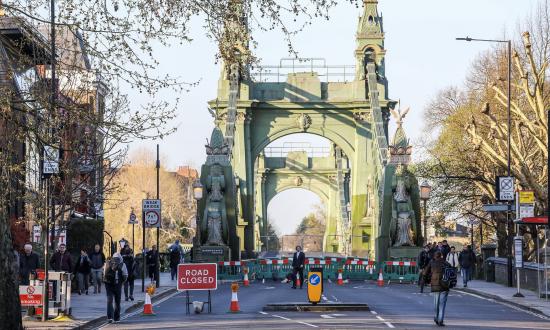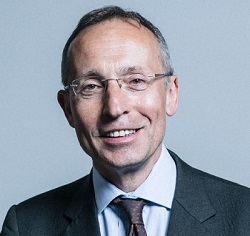MP Andy Slaughter Holds Debate in Westminster on Hammersmith Bridge
And asks the Government to help with funding the necessary repairs


During the debate, held at Westminster Hall on Tuesday 3 March, he revealed that H&F Council and TfL have applied for funds under the Government's Large Local Majors scheme, and said that the project was "a bigger project than the local authority can sustain" and that "We have to look to Government when major strategic assets fail."
He said that on March 9, he, Richmond Park MP Sarah Olney and the two borough council leaders will be meeting Baroness Vere, the Minister with direct line of responsibility for the matter to discuss the funding.
This said: "We know where we are going with the methodology, the necessary works—complex as they are—and what to do about temporary river crossings, and although with most of those issues, we do not have a final timescale or costing, we know the ballpark figures. What we do not have, to put it crudely, is the money."
"We have had £25 million, which has taken us thus far with the works that are necessary to the bridge, but we need a substantial amount more—at least £100 million beyond that."
Transport Minister Kelly Tolhurst, who was standing in for roads minister Baroness Vere, answered: "‘The Government support the efforts to repair Hammersmith bridge and bring it back into operation in a cost-effective and speedy manner.
"However, we must recognise that it is for the London Borough of Hammersmith and Fulham, as the owner of the bridge, to assess the merits of different funding options for its repair.
"‘Local highways authorities such as Hammersmith and Fulham Council have a duty under section 41 of the Highways Act 1980 to maintain the highways network in their area."
During the debate, Mr Slaughter explained the history of the ridge and the current situation, saying: "Hammersmith bridge is in a different category from many other bridges over the Thames. It is a largely cast-iron and wooden structure. There is no other example—I think it is unique in the world in how it is constructed. That makes it rather like Hammersmith flyover which we had a similar problem with some years ago—a unique structure that required major closures, and £70 million of expenditure—and the bridge, too, will need a radical solution.
"One good thing coming out of the current closure is that everybody is agreed on a way forward: we have to do sufficient work to give the bridge a long life into the future. A further patch-up job, or even further substantive repair jobs of the type done previously, clearly will not work.
"Where are we in the scheme? Thanks to the £25 million that TfL put up when the closure initially happened last April, there has been no impediment to works going forward: the scoping, the planning and feasibility studies defining what is necessary in terms of both the stabilising works and the major works to the bridge.
"Within a month or two, we will be in a position to let those contracts and to ensure that the work progresses. Although it is taking a substantial amount of time, there is general understanding that it has to be done properly in that way."
"I think they would agree that if this major strategic river crossing and landmark, an important bridge for London, is to be restored, the co-operation will be required of not only the local authorities, Transport for London and the Greater London Authority, but the Department for Transport."
You can read the debate in full on the They Work For You website.
The debate came as Transport for London launched a public consultation and a series of drop- in exhibitions on the temporary bridge it plans to open during the restoration works. You can read the full details here.
March 5, 2020